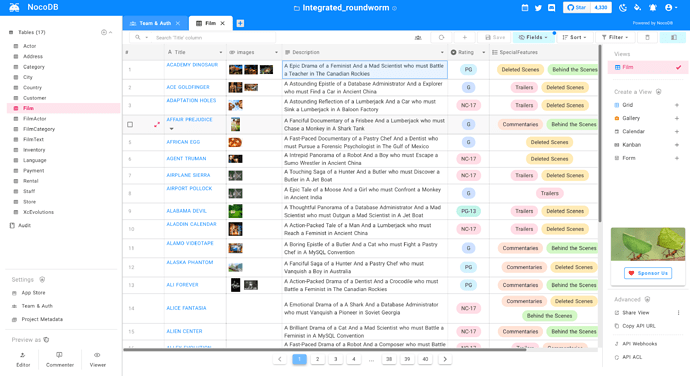NocoDB for YunoHost
This package allows you to install NocoDB quickly and simply on a YunoHost server.
If you don’t have YunoHost, please consult the guide to learn how to install it.
Overview
NocoDB is an open source NoCode platform that turns any database into a smart spreadsheet, alternative to Airtable.
- Connect to new/existing SQL database and turn them into spreadsheet.
- Create grid view, gallery view, kanban view and calendar view on top your data
- Search, sort, filter columns and rows with ultra ease
- Invite your team with fine grained Access Control
- Share views publicly and also with password protection
- Provides REST & GraphQL APIs with Swagger & GraphiQL GUI
(from NocoDB’s website)
Demo: https://www.nocodb.com/demos
Screenshots
Disclaimers / important information
NocoDB has its own authentication system which does not rely on YunoHost’s SSO or LDAP server.
- You can make it public, especially if you need its API.
- You will need to create the first admin right after installation.
Documentation and resources
- Official app website: https://www.nocodb.com/
- Upstream app code repository: GitHub - nocodb/nocodb:


 Open Source Airtable Alternative
Open Source Airtable Alternative - YunoHost documentation for this app: NocoDB | Yunohost Documentation (to be written)
- Report a bug: Issues · YunoHost-Apps/nocodb_ynh · GitHub
- Ask for support in YunoHost forum, section Support apps: Support apps - YunoHost Forum
Developer info
Please send your pull request to the testing branch.
To try the testing branch, please proceed like that.
sudo yunohost app install https://github.com/YunoHost-Apps/nocodb_ynh/tree/testing --debug
or
sudo yunohost app upgrade nocodb -u https://github.com/YunoHost-Apps/nocodb_ynh/tree/testing --debug
More info regarding app packaging: Introduction to packaging | Yunohost Documentation
